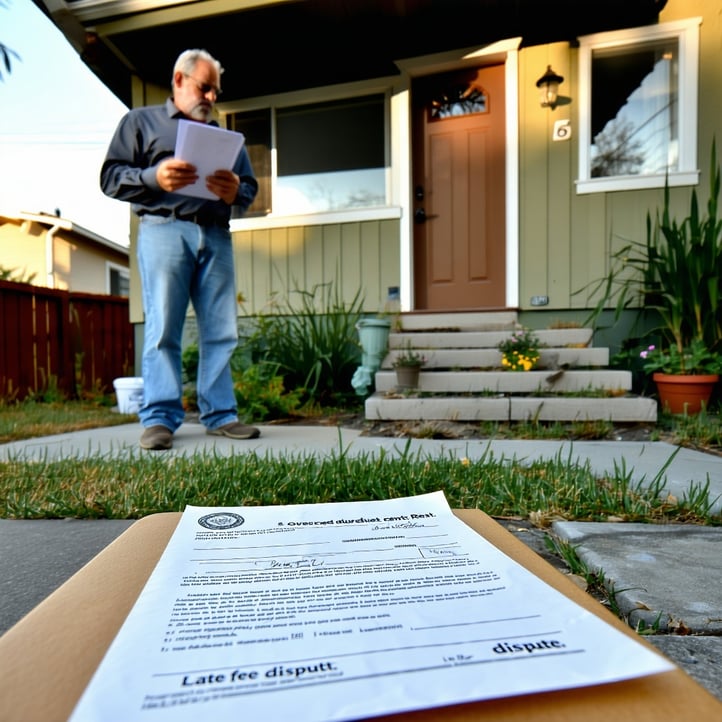If you own a rental property in Carlsbad, Encinitas, Vista, San Marcos, Oceanside, or anywhere in North County San Diego, returning a tenant’s security deposit properly is one of the most important legal tasks you’ll handle as a landlord. Done wrong, it’s one of the fastest ways to end up in small claims court. But done right, it protects you, your finances, and your reputation.
Disputes over deposits are among the most common reasons landlords are sued in California. That’s why understanding the correct process isn’t optional it’s essential. In this guide, we’ll walk you through five clear steps to stay compliant with California law when a tenant moves out.
Step 1: Know Your Deadline
Under California law, landlords have 21 calendar days not business days to return the tenant’s security deposit or provide an itemized deduction statement. This clock starts the day the tenant physically vacates the property and returns the keys. This is not the same as the lease end date; it’s tied to when possession is returned.
Don’t make the mistake of thinking this is three weeks or that weekends don’t count. It’s 21 straight days, including holidays and Sundays. Missing this deadline is a common error that can result in penalties and forfeiture of your right to deduct anything from the deposit.
Step 2: Perform a Final Walk-Through
California law requires you to offer tenants the option of a pre-move-out inspection. This gives them the opportunity to fix issues before move-out and avoid charges. While not every tenant accepts this, offering it is a legal requirement.
Once the tenant has moved out, do your final inspection. Take high-resolution, time-stamped photos of every room, appliance, fixture, and surface. Be thorough. These photos are critical for identifying tenant-caused damage versus normal wear and tear.
Compare these move-out photos with your original move-in condition documentation. If you used a proper move-in checklist and took detailed photos at the start of the lease, you’ll now be able to make a fair and defensible determination.
Step 3: Calculate Deductions Carefully
California law is very clear about what you can deduct from a tenant’s security deposit. Deductions must fall into one of these categories:
- Unpaid rent
- Cleaning costs, but only if cleaning is necessary to restore the unit to the same level of cleanliness it had at move-in
- Repairing damage beyond normal wear and tear
- Replacing personal property such as appliances, fixtures, or furnishings that were provided with the lease and are now damaged or missing
If you deduct more than $125 for any individual item or service, you must include copies of invoices or receipts. Starting in 2025, landlords must also include photos for all cleaning or repair deductions, regardless of the amount.
Estimates are allowed only if the work hasn’t been completed yet, but in that case, you must later provide proof that the work was actually done. Never round up or guess. Courts expect precise records, and tenants have the right to challenge unsupported deductions.
Step 4: Send the Itemized Statement
Once you’ve made your deductions and gathered your documentation, you’re required to send the remaining portion of the deposit, along with a written itemized statement, to the tenant’s forwarding address within the 21-day deadline.
The statement should include:
- A breakdown of each deduction
- Copies of receipts and/or estimates
- Photos if applicable (required beginning in 2025)
Send this by first-class mail unless the tenant has given you written permission to send it via email. You are not required to confirm receipt, but having a record of when and where it was sent is important in the event of a dispute.
Step 5: Keep Your Records
Once the statement and refund are sent, your job isn’t quite done. You need to retain the documentation for at least four years, including:
- Proof of mailing or tracking
- Copies of invoices, estimates, and receipts
- Photos and checklists
- Communication logs (texts, emails)
Tenants can file claims long after move-out, and your best defense will always be a clear paper trail. Judges in small claims court don’t rely on memory or personal impressions they look at documentation.
One Final Tip: Don’t Guess Document
When it comes to security deposits, the law is heavily weighted in favor of the tenant. California courts expect landlords to be exact, fair, and transparent. Any appearance of overcharging or vague deductions will likely be ruled against you.
That’s why we always tell our clients: don’t rely on your memory or your gut. Use clear, objective evidence. Document everything. And when in doubt, don’t make the deduction unless you can prove it.
Why It Pays to Get Help
At Raintree Property Management, we take the stress out of deposit returns. We offer our North County San Diego clients a complete process that includes:
- Detailed move-in and move-out documentation
- Pre-inspection notices
- Licensed vendor quotes and receipts
- On-time compliance with all legal deadlines
- Thorough tracking of communication and proof of mailing
This approach ensures our clients stay fully compliant while avoiding costly deposit disputes. Our team handles all the legal nuances so you don’t have to worry about missing a deadline or being sued over a small deduction.
Need help navigating your next tenant turnover?
Click here to request a free rental analysis and learn how Raintree Property Management can help you protect your investment, stay compliant, and avoid legal risk while keeping your tenants informed and satisfied.




